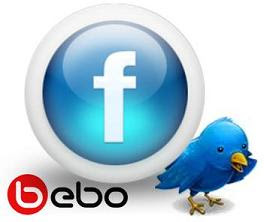
Your email marketing messages reach your subscribers' inboxes via the Internet. We are in the midst of an evolutionary shift in how people are accessing the Internet. Analysts including those at Morgan Stanley and Gartner Research are predicting that within the next three to five years, mobile devices will become the number one access point to the Internet worldwide. Since the commercialization of the Internet about twenty years ago, online marketing (which includes email marketing) has been all about The Desktop Experience. With more and more people subscribing to mobile services, customers are starting to demand the next evolutionary step: The Mobile Experience. Brands that do not have a mobile experience to offer their customers are in danger of losing many of their customers to competitors that do.
Mobile devices are ubiquitous, and they are highly personal; people share computers but they don't share mobile phones. The most important quality from a marketer's perspective is that mobile devices are the enablers of instant gratification. If a call to action can be performed within the same snapshot of time as the moment of decision, the greater the likelihood that the call to action will actually be accomplished. It's time that email marketers start thinking about The Mobile Experience in their programs - starting with the Welcome program.
The vast majority of brands allow interested people to subscribe to their email marketing programs by entering an email address on a form directly on their web sites. Brands including Chuck E. Cheese's, Target, Perry Ellis, Walmart and Olive Garden all feature an email marketing sign up form directly on their home pages.
While each of these brands have successful email marketing programs, there is a shortcoming to this web page sign up approach. The shortcoming is that there is an inherent disconnect between the time that a person experiences the brand and the time when the person is able to subscribe to the brand's email marketing program. For example, I am experiencing the Olive Garden brand when I am in the restaurant with my family enjoying their food. Will it even occur to me to sign up for their email marketing program hours or even days later when I'm at my computer?
It is with scenarios like this that the power of email marketing becomes enhanced through the power of text messaging. Not all cellphones have the ability to surf the web; but all cellphones have the ability to send and receive text messages. People carry their cellphones with them wherever they go. If a person can subscribe to a brand's email marketing program simply by sending a text message containing his email address, then this capability is a powerful boost to the brand's Welcome program. The text-to-subscribe capability enables people to sign up for email offers and promotions while they are in the midst of the brand's experience. Chuck E. Cheese's is one example of a brand that has a successful text-to-subscribe feature of their email marketing program.
The Mobile Experience of text-to-subscribe should carry over to the Welcome email itself. Anyone who subscribes to the email marketing program in this manner should receive a mobile-formatted Welcome email that is immediately sent as soon as the text message containing the email address is received. Furthermore, the Welcome email should contain a reward that is immediately redeemable. Give people the ability to further experience your brand while they are in the moment. According to a recent study, offers within Welcome emails have "significantly higher transaction rates than those within bulk messages".
B2B brands can likewise take advantage of text-to-subscribe for their email marketing programs. Conferences and tradeshows are excellent scenarios for this type of opt-in mechanism. If you are exhibiting at the tradeshow floor, don't wait for people to return to their hotel rooms before they opt-in; let them subscribe right there on the spot.
Mobile devices are the enablers of instant gratification. Have confidence in your brand to make your email marketing program an object of a person's desire for instant gratification. Implement The Mobile Experience in your Welcome program.































